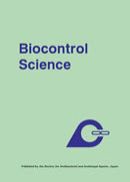Volume 10, Issue 1-2
Displaying 1-11 of 11 articles from this issue
- |<
- <
- 1
- >
- >|
-
2005Volume 10Issue 1-2 Pages 3-11
Published: June 01, 2005
Released on J-STAGE: June 28, 2010
Download PDF (1530K) -
2005Volume 10Issue 1-2 Pages 13-19
Published: June 01, 2005
Released on J-STAGE: June 28, 2010
Download PDF (1179K) -
2005Volume 10Issue 1-2 Pages 21-29
Published: June 01, 2005
Released on J-STAGE: June 28, 2010
Download PDF (1431K) -
2005Volume 10Issue 1-2 Pages 31-36
Published: June 01, 2005
Released on J-STAGE: June 28, 2010
Download PDF (2528K) -
2005Volume 10Issue 1-2 Pages 37-43
Published: June 01, 2005
Released on J-STAGE: June 28, 2010
Download PDF (1947K) -
2005Volume 10Issue 1-2 Pages 45-53
Published: June 01, 2005
Released on J-STAGE: June 28, 2010
Download PDF (6996K) -
2005Volume 10Issue 1-2 Pages 55-60
Published: June 01, 2005
Released on J-STAGE: June 28, 2010
Download PDF (2447K) -
2005Volume 10Issue 1-2 Pages 61-65
Published: June 01, 2005
Released on J-STAGE: June 28, 2010
Download PDF (2395K) -
2005Volume 10Issue 1-2 Pages 67-72
Published: June 01, 2005
Released on J-STAGE: June 28, 2010
Download PDF (1559K) -
2005Volume 10Issue 1-2 Pages 73-77
Published: June 01, 2005
Released on J-STAGE: June 28, 2010
Download PDF (4229K) -
2005Volume 10Issue 1-2 Pages 79-83
Published: June 01, 2005
Released on J-STAGE: June 28, 2010
Download PDF (709K)
- |<
- <
- 1
- >
- >|
